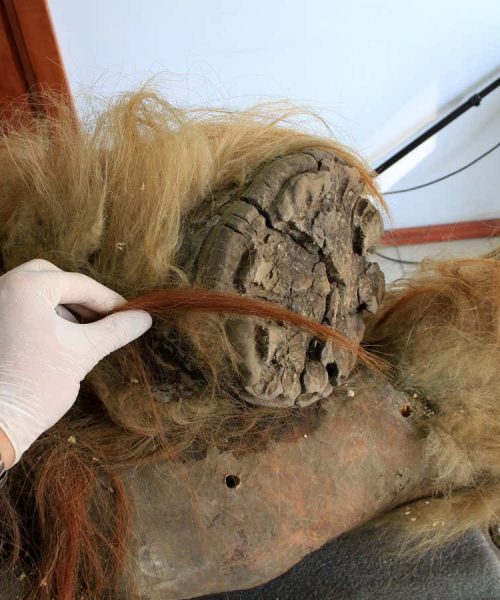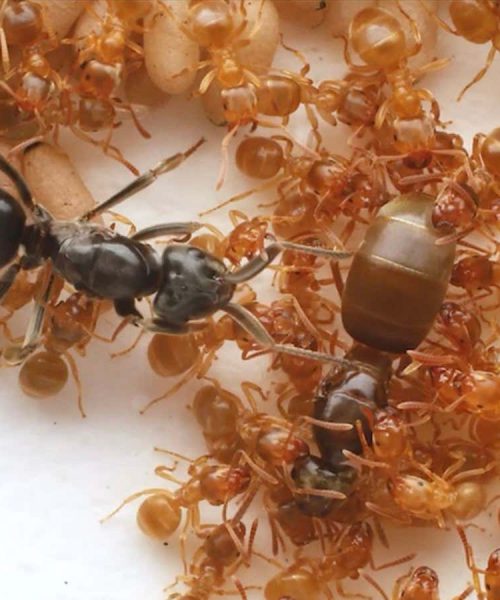
Here they come, once again, with their beady little eyes
Georgi Baird/Shutterstock
Each spring, cicadas burst forth from their underground burrows by the billions. This happens so regularly that we don’t usually remark on it. But this year, two broods – both having been underground for more than a decade – will emerge simultaneously, blanketing parts of the US with trillions of bugs. They will create a racket, an almighty buzz that stretches from the Atlantic Ocean to the border with Canada. And so will the news stories that herald their arrival. It is being called a historic event unlike anything we have seen since 1803 – but that depends on how you look at it.
So, is this rare? Has it really been more than a century since more than one brood of cicadas emerged?
Well, no. This happens every once in a while. In the US, there are three broods of cicadas that emerge every 13 years, and 12 broods that emerge every 17 years. Sometimes they align in the same year, as two did in in 2014 and again in 2015.
This year will see Brood XIX, also known as the Great Southern Brood, spread across more than a dozen states in the southern US. At the same time, Brood XIII will pop up in several states around the Great Lakes in the northern part of the country. The last time they emerged together was 1803 and they won’t sync up again until 2245.
Advertisement
However, it’s not as if they arrive with a little stamp on their wing that signifies their brood – for the average person, the most noticeable thing may be a louder soundtrack to summer evenings, that classic cicada drone coming from a far bigger chorus.
But hasn’t there been more recent news about cicadas?
Certainly, there has. In 2021, for example, the Great Eastern Brood emerged after 17 years underground to much fanfare, due in part to the fact it hit populous areas like Philadelphia, Pennsylvania, and Washington DC. The hype was enough to draw bug-seeking tourists and spur culinary creations such as cicada scampi. (A note for the gastronomically curious: cicadas are related to crustaceans and people with a shellfish allergy should avoid eating them, according to the US Food and Drug Administration.)
So why is there so much attention on the cicada emergence in 2024? Will there be an unprecedented number of cicadas coming up?
It isn’t so much the number of cicadas but the area these red-eyed insects will invade. “It’s not unheard of to have dual brood emergences, but this one is notable for the geographic range it covers,” says Jonathan Larson at the University of Kentucky. “It’ll be a spectacular force of nature.”
That means more US residents could witness the phenomenon than in years past, especially because Brood XIX is one of the largest in the world by geographic extent, boasting around 2 million cicadas per hectare, or a million per acre.
Is there any reason to worry about the cicadas?
Cicadas don’t bite or sting, so while they might be a short-term nuisance for some, they aren’t dangerous. “There are only so many [broods] that you can experience in your lifetime,” says Jessica Ware at the American Museum of Natural History in New York. “So rather than being annoyed by the sound, just relish in it.”
Why do periodical cicadas live like this?
Cicadas hide underground as nymphs, feeding off the sap of tree roots for years at a time. When the soil warms in May and June, they crawl from their underground burrows and quickly look for a vertical surface – a tree, house or car – to scale. “One morning, you’ll wake up, and all of a sudden, there’ll be cicadas everywhere,” says Chris Simon at the University of Connecticut.
A week later, they slough off their exoskeletons and reach their final adult form. Males then woo females by vibrating a membrane on their bodies, producing a cacophony of song. After mating, females lay their eggs and all the adults die. Within a month, the cicadas are gone. This waiting game is all part of the periodical cicada’s dramatic survival tactics. Because the insects flood an area in the thousands, birds and other predators quickly fill up on the buggy buffet – leaving some cicadas to spare. The 13 and 17-year pattern is unpredictable enough that predators and diseases have a hard time keeping up.
Exactly how cicadas ace this prime-number timing isn’t clear, but most scientists agree that the insects measure the passage of years through environmental cues from the trees they feed on.
Will this happen again soon?
The next two-brood spring won’t occur again until 2037, which is why cicada researchers are eager to sample and study the bugs while they can. Because it has been years since either of these broods were above ground, they are also keen to see how many cicadas actually emerge. The insects burrowed underground more than a decade ago, so the nutrients in the soil around them may have varied due to fertiliser use, plants growing in the area or even climate change. There may also have been something built atop a cicada’s sleeping spot. Such is the gamble these insects make.
After 2037, another double brood will emerge in 2041, and another in 2050 and 2053 and 2054. Periodically, as their name suggests, they will go on like that as long as cicadas exist.
Topics:





